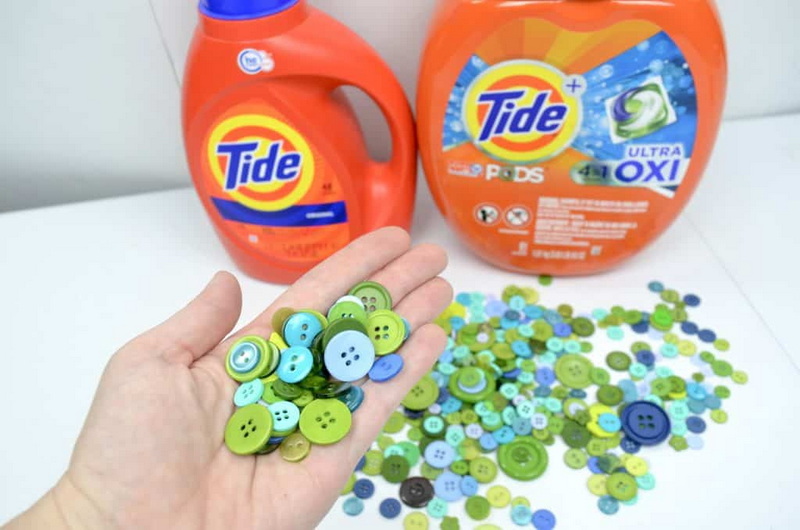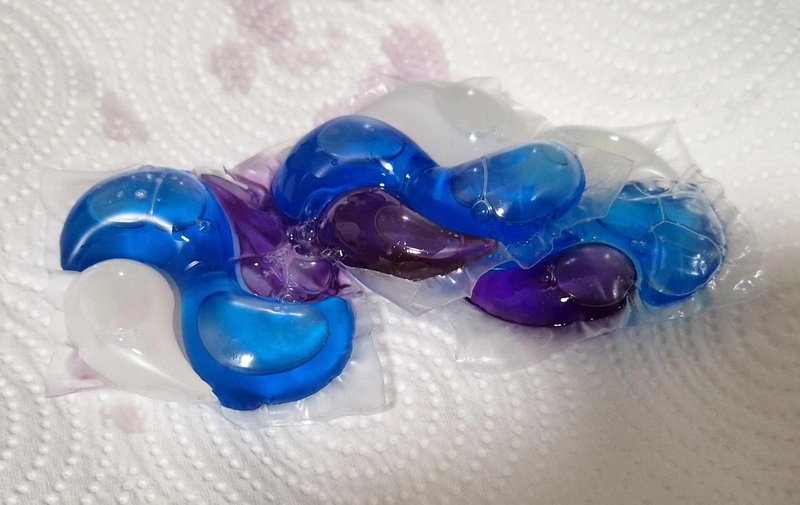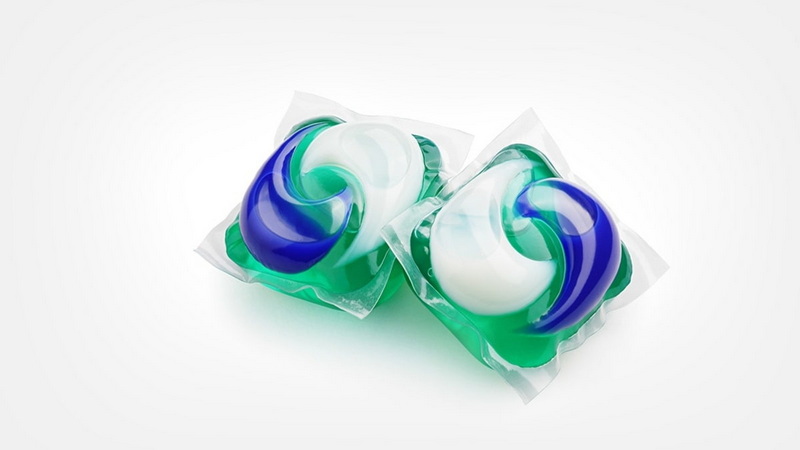Dongguan UFine Daily Chemical Co.,Ltd.
- All
- Product Name
- Product Keyword
- Product Model
- Product Summary
- Product Description
- Multi Field Search
Views: 222 Author: Tomorrow Publish Time: 11-13-2025 Origin: Site











Content Menu
● Understanding Laundry Detergent Pod Containers
>> What Are Laundry Detergent Pod Containers Made Of?
● Material Lifecycle and Environmental Footprint
● Challenges in Recycling Laundry Detergent Pod Containers
>> Complex Material Composition
● Innovations and Developments in Sustainable Packaging
● How Consumers Can Help Improve Recycling Outcomes
>> Check Local Recycling Guidelines
>> Separate Packaging Components
>> Reduce Single-Use Plastic Usage
>> Participate in Take-Back Programs
● The Role of Manufacturers in Packaging Sustainability
● Regulatory and Policy Context
● FAQ
>> 1. Are plastic tubs for laundry pods recyclable?
>> 2. Can laundry pod pouches be recycled?
>> 3. How can I prepare laundry detergent containers for recycling?
>> 4. Are there biodegradable laundry pod containers available?
>> 5. What should manufacturers do to improve recyclability?
Laundry detergent pods have become a popular choice for convenient and efficient cleaning. However, with the rise in use of these pods, concerns about sustainability and environmental impact grow as well. One important aspect is the recyclability of the containers used to package laundry detergent pods. This article explores whether all laundry detergent pod containers are recyclable, the materials involved, challenges, and best practices for consumers and manufacturers.

Laundry detergent pod containers are typically made from plastic materials designed to protect the pods from moisture and damage while making them easy to store and transport. Common materials include:
- High-Density Polyethylene (HDPE): A durable plastic often used for rigid containers.
- Polypropylene (PP): Another commonly used plastic with good chemical resistance.
- Polyethylene Terephthalate (PET): Typically used in clear plastic bottles.
- Mixed Materials and Laminates: Some containers use multi-layered plastics or include paper labels and other components.
While HDPE and PP are widely used for their stiffness and barrier properties, PET is favored when transparency is desired or for compatibility with transparent cartons. Mixed materials and laminates, on the other hand, are designed to maximize product protection but complicate the recycling process due to the separation required among different layers.
Laundry pods are packaged differently depending on the brand and product type. Common types of containers are:
- Rigid plastic tubs.
- Plastic pouches or bags.
- Cardboard cartons combined with plastic components.
The type of container influences the recyclability of the packaging. Rigid tubs are more likely to be accepted in curbside programs, whereas flexible pouches often fall outside standard recycling streams. Cardboard cartons may be recyclable if they are free of contamination and do not contain metallic coatings or laminated layers.
A deeper look at the lifecycle of typical pod containers reveals trade-offs between protection, usability, and end-of-life handling. Rigid HDPE tubs provide excellent protection against moisture and air ingress, which helps keep pods fresh and reduces leakage. However, HDPE production and molding carry energy and water use considerations. Recycling rates for HDPE are generally higher than for many other plastics, but contamination with detergent residues can reduce the quality of recycled material. Labels, adhesives, and inks add another layer of complexity, potentially requiring pre-sorting or specialized processing.
Are All Laundry Detergent Pod Containers Recyclable?
The short answer is no—not all laundry detergent pod containers are recyclable. Several factors determine recyclability:
- HDPE and PET containers are widely accepted by recycling programs. These plastics are easier to process and have well-established recycling streams.
- Multi-layer plastic pouches and flexible packaging are often not recyclable. Such materials combine different plastics or additives, making recycling difficult.
- Containers with mixed materials (e.g., plastic with metallic films or laminated layers) are usually not recyclable.
Recyclability largely depends on the capabilities of local recycling infrastructure. Even if a container is theoretically recyclable, many facilities do not accept certain types of plastic or flexible packaging because of sorting difficulty or contamination risks.
Laundry detergent residue left inside containers can cause contamination of recycling streams, leading to rejection by recycling centers. Even a small amount of residue can complicate chemical recycling processes or reduce the quality of the recycled resin.
Different countries and regions have diverse recycling schemes. A container that is recyclable in one country may not be accepted in another due to differences in allowed materials, sorting technology, and contamination thresholds. For manufacturers, this means designing packaging that aligns with diverse end-of-life systems can be challenging but crucial for global markets.
Beyond the main container, other parts such as caps, spouts, liners, and inner bags can affect recyclability. Some caps are made from a different polymer than the tub, requiring separate sorting. Inner bags or sheaths may be non-recyclable or require separate recovery streams. Labels and inks can also impact recyclability if they are not easily removable.

Multi-layer plastics are engineered for product protection but are problematic in recycling because separating layers is often not feasible. When layers are fused together, mechanical recycling processes struggle to recover clean polymers, reducing their value.
Labels, adhesives, and inks can hinder the sorting and recycling process. Some labels are designed to be removable, but many are not, leading to contamination in recycling streams. In addition, ink impurities can complicate optical sorting.
Improper cleaning or disposal habits reduce the chance that materials will be recycled effectively. For instance, leaving detergent residue attracts pests or causes odors, complicates downstream processing, and may discourage recycling programs from accepting the containers.
Recycling expensive packaging materials or those with low market value can be economically impractical in some regions. If the cost of sorting and processing exceeds the value of recovered material, facilities may reject the item despite its theoretical recyclability.
Manufacturers and material scientists work to improve environmental impact by:
- Developing mono-material packaging that uses a single type of plastic to ease recycling.
- Introducing biodegradable and compostable packaging alternatives.
- Enhancing label and adhesive formulas to be recyclable-friendly.
- Promoting refill and bulk options to reduce packaging waste.
- Exploring chemical recycling technologies that can handle contaminated or multi-layer plastics more efficiently.
Case studies and industry trends illustrate a shift toward more sustainable options. Some brands have started offering recyclable tubs with standardized closures and clear disposal instructions, while others test film-free inner liners and alternative materials such as bio-based polymers.
Consumers should verify which types of plastic packaging local recycling services accept before disposing of containers. This is especially important for regions with limited access to advanced sorting facilities or where film plastics are not accepted curbside.
Cleaning out residue reduces contamination risk and helps ensure containers are accepted for recycling. A simple rinse with water and minimal dilution can be sufficient, followed by air drying.
Removing non-recyclable parts such as lids, labels, or secondary packaging boosts recycling efficiency. If local guidelines permit, disassemble any mixed-material parts to facilitate sorting.
Opting for bulk detergent, refill packs, or brands committed to sustainable packaging reduces overall waste. Encouraging manufacturers to adopt refillable solutions can significantly lower container generation.
Some regional programs and retailers offer take-back or recycling drop-off for hard-to-recycle packaging. Participating in these programs can improve recovery rates for difficult materials.
Companies manufacturing laundry detergent pods play a crucial role by:
- Designing packaging with recyclability in mind.
- Providing clear recycling instructions on packaging.
- Innovating to reduce plastic content and promote mono-material solutions.
- Partnering with recycling organizations to increase collection and processing capabilities.
- Exploring refillable and reusable packaging concepts to minimize waste.
Policy measures influence packaging design and recycling outcomes. Extended Producer Responsibility (EPR) schemes, plastic packaging taxes, and standardized labeling can drive manufacturers toward more sustainable solutions. Harmonization of recycling codes and better public communication about disposal practices can reduce confusion and improve recovery rates.
The industry is moving toward packaging that is easier to recycle, with a growing emphasis on circular economy principles. Consumers can expect more brands to adopt mono-material packaging, clearer disposal instructions, and better take-back options. Advances in sorting technology, automated contamination detection, and chemical recycling capabilities hold promise for expanding recyclability to more container types.
Not all laundry detergent pod containers are recyclable due to differences in materials, local recycling capabilities, and contamination issues. While many common rigid plastic tubs made from HDPE or PET are recyclable, flexible pouches and multi-material packaging often are not. Consumers can help improve recycling rates by understanding local guidelines, properly cleaning containers, and separating materials. Simultaneously, manufacturers hold responsibility to innovate sustainable packaging and provide clear disposal instructions. Together, these efforts can mitigate environmental impact and support a move toward more sustainable laundry care solutions.

Yes, plastic tubs made from HDPE or PET plastics are generally recyclable in most curbside programs if they are clean and free of detergent residue.
Most flexible pouches for laundry pods are not recyclable due to their multi-layer plastic composition. Check your local recycling guidelines for specific rules.
Rinse containers thoroughly to remove any detergent residue, separate lids and labels if possible, and follow your local recycling program's instructions.
Some brands are developing biodegradable or compostable packaging alternatives, but these are not yet widely available and may require industrial composting facilities.
Manufacturers can design packaging from mono-material plastics, reduce plastic use, improve labeling for recycling, and provide clear disposal instructions for consumers.